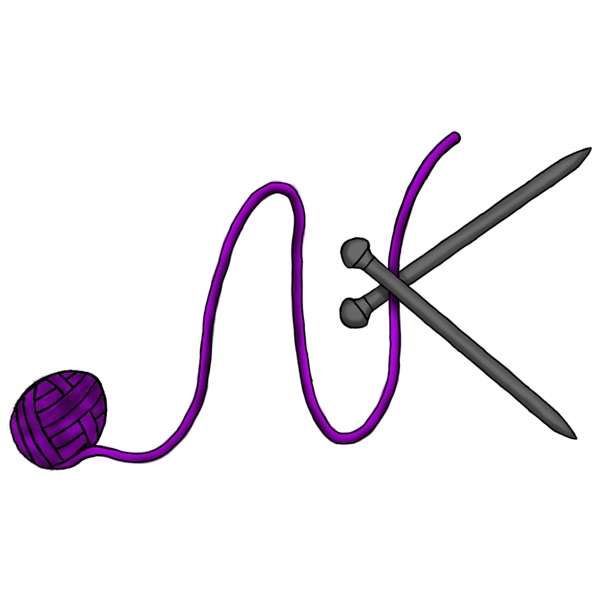Foundations of Amateur Radio
Today I'm going to spend a little longer with you than usual, but then, I think this is important and it's good to end the year on a bang.
Have you ever attempted to make contact with a specific DXCC entity and spent some time exploring the band plan to discover what the best frequency might be to achieve that? If you got right into it, you might have gone so far as to attempt to locate the band plan that applies to your particular target. If you have, what I'm about to discuss will not come as a surprise. If not, strap yourself in.
When you get your license you're hopefully presented with a current band plan that is relevant to your license conditions. It shows what frequencies are available to you, which modes you can use where, and what power levels and bandwidth are permitted. It should also show you if you're the primary user or not on a particular band. If you're not sure what that means, some frequency ranges are allocated to multiple users and amateur radio as one such user is expected to share. If you're a primary user you have priority, but if you're not, you need to give way to other traffic.
It should come as no surprise that this is heavily regulated but as a surprise to some, it changes regularly.
Across the world, frequency allocation is coordinated by the International Telecommunications Union, the ITU, and specifically for amateur radio, by the International Amateur Radio Union, the IARU. It coordinates frequencies with each peak amateur radio body. The ITU divides the world into three regions, Region 1, 2 and 3, each with its own band plan. Within each region, a country has the ability to allocate frequencies as it sees fit - presumably as long as it complies with the ITU requirements. As a result, there's not one single picture of how frequencies are allocated.
And this is where the fun starts.
In Australia there's an official legislated band plan, cunningly titled F2021L00617. It contains the frequencies for all the radio spectrum users as well as a column for each ITU region. The document is 200 pages long, and comes with an astounding array of footnotes and exclusions. It's dated 21 May 2021. There's a simplified version published by the Wireless Institute of Australia, which comes as a 32 page PDF. It was last updated in September 2020. When I say "simplified", I'm of course kidding. It doesn't include the 60m band which according to the regulator is actually an amateur band today. The 13cm band according to the WIA shows a gap between 2302 and 2400, where the regulator shows it as a continuous allocation between 2300 and 2450 MHz. The point being, who's right? What can you actually use?
Oh, the WIA does have a different page that shows that 6m "has had some additions", but they haven't bothered to update their actual band plan.
To make life easier, the regulator includes helpful footnotes like "AUS87". This is particularly useful if you want to search their PDF to determine what this actually says, since it only appears 156 times and it's not a link within the document. In case you're curious, it's related to three radio astronomy facilities operated by the Commonwealth Scientific and Industrial Research Organisation, better known as the CSIRO, two by the University of Tasmania and one by the Canberra Deep Space Network. Interestingly the Australian Square Kilometer Array and the Murchison Widefield Array don't feature in those particular exclusions, they're covered by footnote AUS103.
If that wasn't enough. The regulator has no time for specific amateur use. You can find the word Amateur 204 times but there's no differentiation between the different classes of license which means that you need to go back to the WIA document to figure out which license class is allowed where, which of course means that you end up in no-mans land if you want to discover who is permitted to transmit on 2350 MHz.
If we look further afield, in the USA the ARRL publishes half a dozen different versions, each with different colours, since black and white, grey scale, colour and web-colour are all important attributes to differentiate an official document. Of course, those versions are now all six years out of date, having been revised on the 22nd of September 2017. The most recent version, in a completely different format, only in one colour, has all the relevant information. It shows a revised date of 10 February 2023, that or, 2 October 2023 because of course nobody outside the US is ever going to want to refer to that document - seeing as there's only amateurs in the USA, well at least according to the ARRL.
Interestingly the US Department of Commerce, the National Telecommunications and Information Administration, Office of Spectrum Management publishes a colourful chart showing the radio spectrum between 3 kHz and 300 GHz. You can't use it as a technical document, but it's pretty on a wall to amaze your non-amateur friends. The FCC has a band plan page, but I couldn't discover how to actually get amateur relevant information from it.
If you think that's bad, you haven't seen anything yet.
The British are special. The RSGB publishes a variety of versions, each worse than the next. It appears that their system creates a single HTML page for each band, their 32 page PDF is a print out of that and their interactive viewer wraps all that into some proprietary system that makes using it an abysmal experience. Fortunately, they also link to a band plan made by the regulator, presented as a five page PDF which is much more concise and has the helpful heading: "The following band plan is largely based on that agreed at IARU Region 1 General Conferences, with some local differences on frequencies above 430MHz."
Unfortunately it doesn't specify which particular General Conferences apply, but it does helpfully tell us that it's effective from the first of January 2023, unless otherwise shown. That said, 2023 only appears in the headers and footers and 2024 doesn't appear, so who knows what date exceptions exist.
One point of difference is that the RSGB also publishes their band plan as an Excel Workbook. This might start your heart beating a little faster with visions of data entry, sorting, filtering and other such goodies, like figuring out which frequency to use for a particular mode. Unfortunately the authors have used Excel as a tool for making tables like you'd see in a word processing document. Start and Stop frequencies in the same cell, random use of MHz, spacing between bandwidth and frequencies and descriptions intermingled. In other words, this is not an Excel Workbook and it does not contain information in any usable form, unless you want to do some free text searching across the 32 worksheets - what is it with 32 anyway? Perhaps this is their authoring tool and they save as HTML from within Excel or print to PDF. Who knows?
One point that the British do get right is version control. You can see specifically what change was introduced when. For example, on the 6th of March 2009 the 17m QRP frequency was corrected to 18086 kHz. Mind you, there's several pages of updates, helpfully scattered across multiple worksheets. Yes, they're really using Excel as a word processor.
Before I dig into any other countries, I should mention the United Nations Amateur Radio peak body, the IARU, presumably a model that countries should aspire to. The IARU has links to three different sets of band plans. Region 1 breaks the band plan into HF and higher frequencies and the higher frequencies are broken into notional bands, each with their own PDF. Regions 2 and 3 each provide a single PDF, but the Region 3 document is hosted on the Region 2 website. Region 1 documents contain a revision and an active date as well as an author. Region 2 and 3 documents contain a date and are formatted completely differently.
In Germany the DARC attempts to link to the IARU-Region 1 band plan, but the link is pointing at a non-existent page.
In the Netherlands, VERON points at a 2016 edition of the IARU-Region 1 HF band plan and the current Region 1 mixed band plan for higher frequencies.
In Canada the RAC points at a HTML page for each band and presents all the HF frequencies as a single image, yes an image. All the other bands are essentially text describing how to use a particular band. The HF image states that it applies from the first of June 2023, the rest of the pages carry various dates that conflict with each other. For example, the 2m band states on the landing page that it was updated on the 23rd of September 1995, but the page itself refers to a new 2m band plan that was approved in October of 2020. The linked band plan contains all the credit, who is responsible for the plan, naming the entire committee, adding notes and requesting donations, straight from the RAC newsletter, page 36 and 37 of the November / December 2020 edition, rather than providing a stand-alone technical document.
Let's hop back across the Atlantic and see what else we can learn.
In Switzerland things are a little different. Its regulator publishes a frequency allocation plan that is a thing of beauty. It presents as a table on a web page, but it has a search box you can use to filter the frequencies that you're interested in. So if you use the word "amateur", you end up seeing the whole amateur radio spectrum as it exists within the borders of Switzerland. You can also set frequency ranges and as a bonus, if you type in 1 MHz and change the unit to kHz, it actually changes the number to 1000. As I said, a thing of beauty. Oh, and the footnotes? Yeah, they're links and they open a new window with the relevant information, and you can keep clicking deeper and deeper until you get to the actual legislation driving that particular entry. If that's not fancy enough for you, from within the search, you can download an offline HTML copy, you can pick services, rather than use search terms, and the PDF version, because of course there is one, actually has the same active links to footnotes.
That said, it has some idiosyncrasies. It specifies when amateur radio is the primary or the secondary user of a band, except when it doesn't. I presume that this is a regulatory thing and that it's a shared resource, but as an outsider I'm not familiar with Swiss law, but if I was inclined, I could become familiar, since the documents are all written in multiple languages, including English. Another oddity is that some frequencies show no text at all, but I presume that's a bug, rather than by design.
Speaking of bugs, or features, depending on your perspective. Consider the frequency 2300 MHz. Every single document I looked at mixes up how this is shown. Some have a space between the number and the unit, some don't. Some countries put a space between the 2 and the 3, some a dot, some a comma, the Swiss use an apostrophe. Just so we're clear, these are technical documents we're talking about. They're not literary works, there are standards for how to do this, but it seems that the people writing these documents are blissfully unaware of any such references. Even the IARU cannot agree on how to represent the same number, let alone use the same formatting for the same band plan in each of its three regions.
At this point you might come to the conclusion that this is all an abhorrent mess and I'd agree with you. In my opinion, it goes directly to how important our hobby is in the scheme of things and just how little funding is allocated to our activities.
It also shows that there are contradictory sources of truth and not a single unified view on how to present this information to the global amateur community. In case you're wondering why that matters, electromagnetism doesn't stop at the political boundaries of the location where we might find ourselves and if that doesn't matter to you, consider again how you'd best talk to an amateur of any given DXCC entity and on what particular frequency you might achieve that.
So, aside from whinging about it, what can you do about this?
I have started a project, of course I have, that attempts to document two things, well, three. First of all I use the WIA version of the DXCC list - since the ARRL doesn't actually publish that for free anywhere - and use that to track a list of hopefully official frequency allocation documents. I'm also in the process of capturing the content of each of those documents into a database, so we can all figure out what the best frequency is to talk to another country.
I'm still in the design stages for the database, for example, do we want to store a frequency in Hertz, in kHz, or pick a magnitude and store a number? Each of these choices has long term implications for using the tool. Then there's things like discovering which band plan applies to Scarborough Reef, the San Felix Islands and Pratas Island to name a few, since I've really only scratched the surface with the plans I've explored.
I had visions of putting this on GitHub, but perhaps this should be part of the Wikipedia collection and it should live there. I'm still considering the best plan of attack. In the meantime, you can help. Please send an email to cq@vk6flab.com with the official band plan link for your own DXCC entity, and if you have thoughts on how best to structure the database or where this project should live, let me know.
For example, should the database include just band plans, or should we also include things like modes. For example, the official VK calling frequency for 40m is 7.093 MHz. Should that be in the database and should we include the preferred Olivia calling frequency? While looking at that, consider the band labels we use. Australia doesn't have a 75m band, but others do. Some countries refer to the 4mm band, others refer to it by frequency.
So, over to you. Let me know what you think. I'll leave you with a quote by Daren 2E0LXY:
"It is not the class of licence the Amateur holds but the class of the Amateur that holds the licence."
I'm Onno VK6FLAB

 Our TOPPODCAST Picks
Our TOPPODCAST Picks  Stay Connected
Stay Connected







